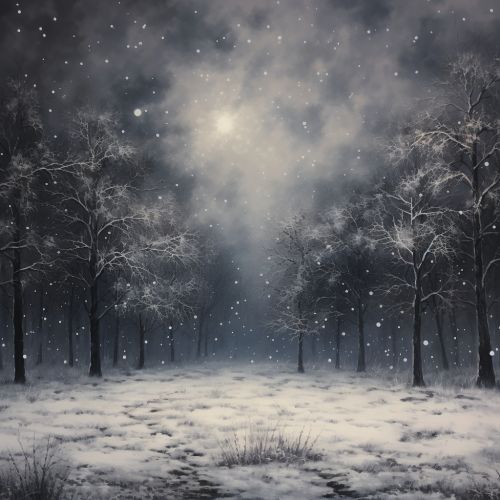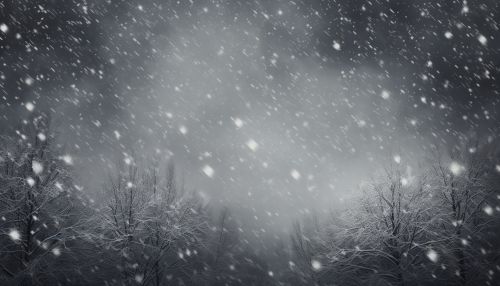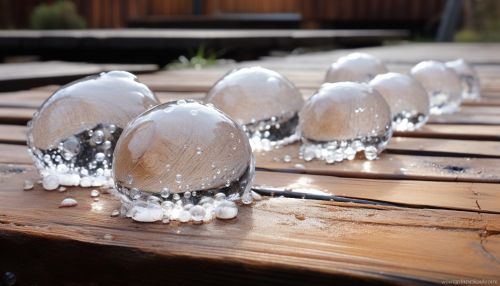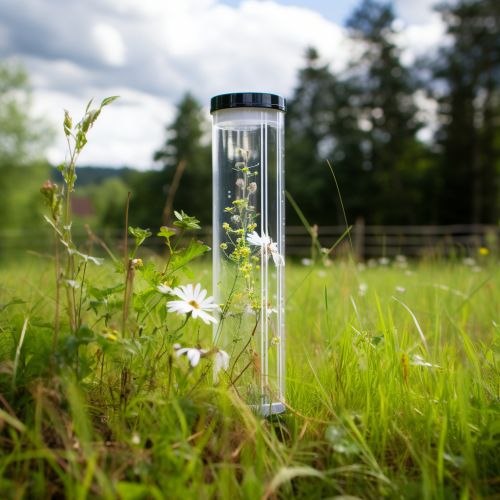Precipitation (meteorology)
Introduction
Precipitation in meteorology refers to any product of the condensation of atmospheric water vapor that falls under gravity from the atmosphere. The main forms of precipitation include drizzle, rain, sleet, snow, ice pellets, and hail. Precipitation forms as smaller droplets coalesce via collision with other raindrops or ice crystals within a cloud. Short, intense periods of rain in scattered locations are called showers.


Formation
Precipitation forms in the atmosphere when air becomes saturated, or filled, with water vapor. Several physical processes can lead to air becoming saturated: cooling of air, addition of moisture, or mixing with saturated air. The process of forming precipitation involves two stages: growth of ice crystals or liquid water droplets in clouds, and then precipitation of these larger particles.


Growth in Clouds
The growth of precipitation particles (either ice or liquid) in clouds involves two main processes: nucleation and growth by condensation and collision-coalescence. Nucleation is the process by which ice or water droplets form in the atmosphere. This can occur either through the freezing of supercooled water or through the deposition of water vapor onto an ice nucleus.
Precipitation
Once the precipitation particles have grown to a sufficient size, they begin to fall towards the Earth's surface. The speed at which these particles fall depends on their size and shape, as well as the temperature and humidity of the atmosphere.


Types of Precipitation
There are many different types of precipitation, including rain, snow, sleet, and hail. Each type of precipitation is caused by specific atmospheric conditions.
Rain
Rain is the most common type of precipitation and occurs when water droplets in a cloud become too heavy to remain in the cloud and fall to the ground. Rain can vary in intensity from light drizzle to heavy downpour.
Snow
Snow forms when the atmospheric temperature is at or below freezing and there is a minimum amount of moisture in the air. If these conditions are met, snow will form. Snowflakes are composed of ice crystals that have formed around tiny particles of dust.
Sleet
Sleet, or ice pellets, form when a layer of freezing air is located above the ground with a layer of warmer air above it. This causes snowflakes to melt into rain as they pass through the warm layer and then refreeze into ice pellets as they pass through the freezing layer near the ground.
Hail
Hail forms in strong thunderstorm clouds, particularly those with intense updrafts. Hailstones begin as small ice pellets that are carried upward by powerful updrafts. If a hailstone is caught in an updraft again, another layer of ice will be added to the hailstone.


Measurement and Distribution
Precipitation is measured using a rain gauge. It is expressed in terms of the depth of water that collects on a flat surface, and is usually reported in millimeters. Precipitation patterns vary widely across the world, with some areas receiving high amounts of rainfall and others receiving very little.
Impact on the Environment and Human Activity
Precipitation has a significant impact on the environment and human activity. It is a key component of the water cycle and plays a crucial role in distributing heat energy from the equator to the poles. Precipitation also influences the distribution of organisms and ecosystems around the world.


